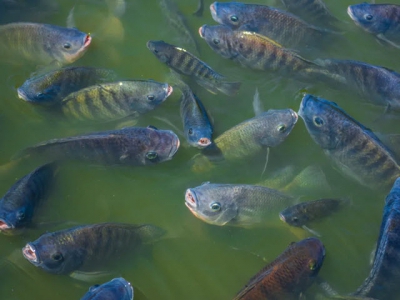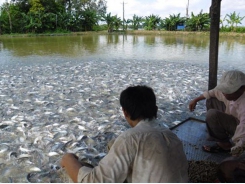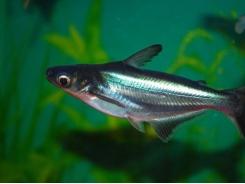Why stress causes smaller tilapia to spawn

Tilapia living in crowded aquaculture ponds or small freshwater reservoirs adapt so well to these stressful environments that they stop growing and reproduce at a smaller size than their stress-free counterparts.
Stressful, crowded environments will cause tilapia to spawn when smaller
So concludes a new study by researchers at the University of Kelaniya in Sri Lanka and the University of British Columbia (UBC) in Canada. It explains that, while most fishes die when stressed, tilapias survive in rough environments by stunting and carrying on with their lives in dwarf form.
“Tilapia and other fish in the Cichlidae family do not spawn ‘earlier’ than other fishes, as it is commonly believed,” Upali S Amarasinghe, lead author of the study and professor at the University of Kelaniya, told the Sea Around Us . “Rather, they are uncommonly tolerant of stressful environmental conditions which, however, elevate their oxygen demand.”
When a tilapia’s metabolism accelerates, it needs more oxygen to sustain its body functions. But the interaction between an increased metabolism and a growing body leads to gills reaching a point where they cannot supply enough oxygen for a larger body, so the fish either dies or stops growing.
These findings will matter to fish farmers, notably in Asia, whose ponds are often full of wildly reproducing, small tilapia for which there is no market
“Gill surface area grows in two dimensions, that is, length and width, but they cannot keep up with bodies that grow in three dimensions – length, width and depth,” said Daniel Pauly, co-author of the study and principal investigator of the Sea Around Us initiative at UBC’s Institute for the Oceans and Fisheries. “As fish get bigger, their gills provide less oxygen per unit of body weight. Thus, to stay alive in stressful conditions, which increase their oxygen demand, fish have to remain smaller. This theme is further developed in what I called the gill oxygen limitation theory.”
In the case of tilapias, the stress they experience under suboptimal conditions adds to the stress they experience from the surface of their gills not keeping with the increasing oxygen demand of their growing bodies. In consequence, the hormonal cascade that leads to maturation and spawning is triggered at smaller sizes than under optimal conditions.
But the spawning doesn’t occur at a ‘younger age,’ as the fish’s growth process has already ended.
To reach this conclusion, the researchers analyzed the length at first maturity and maximum lengths reached in 41 populations of nine fish species such as tilapia and other cichlids found in lakes and aquaculture ponds across the world – from Brazil to Uganda, and from Egypt to Hong Kong.
When looking at the ratio between the maximum lengths these fish can reach and their lengths when they reproduce for the first time, they found it was the same ratio previously identified in other freshwater and marine fish.
“This ratio tells us that tilapias in stressful conditions don’t spawn ‘earlier,’ they just adjust their size downward, but their life cycle continues,” Amarasinghe said.
“These findings will matter to fish farmers, notably in Asia, whose ponds are often full of wildly reproducing, small tilapia for which there is no market,” Pauly said.
Related news
Tools

Phối trộn thức ăn chăn nuôi

Pha dung dịch thủy canh

Định mức cho tôm ăn

Phối trộn phân bón NPK

Xác định tỷ lệ tôm sống

Chuyển đổi đơn vị phân bón

Xác định công suất sục khí

Chuyển đổi đơn vị tôm

Tính diện tích nhà kính

Tính thể tích ao




 High hopes for an oral Francisella vaccine for…
High hopes for an oral Francisella vaccine for…  How Aflatoxins threaten pangasius catfish production
How Aflatoxins threaten pangasius catfish production